Sign up for our Book Club newsletter
Get the latest news, events and more from the Los Angeles Times Book Club, and help us get L.A. reading and talking.
You may occasionally receive promotional content from the Los Angeles Times.
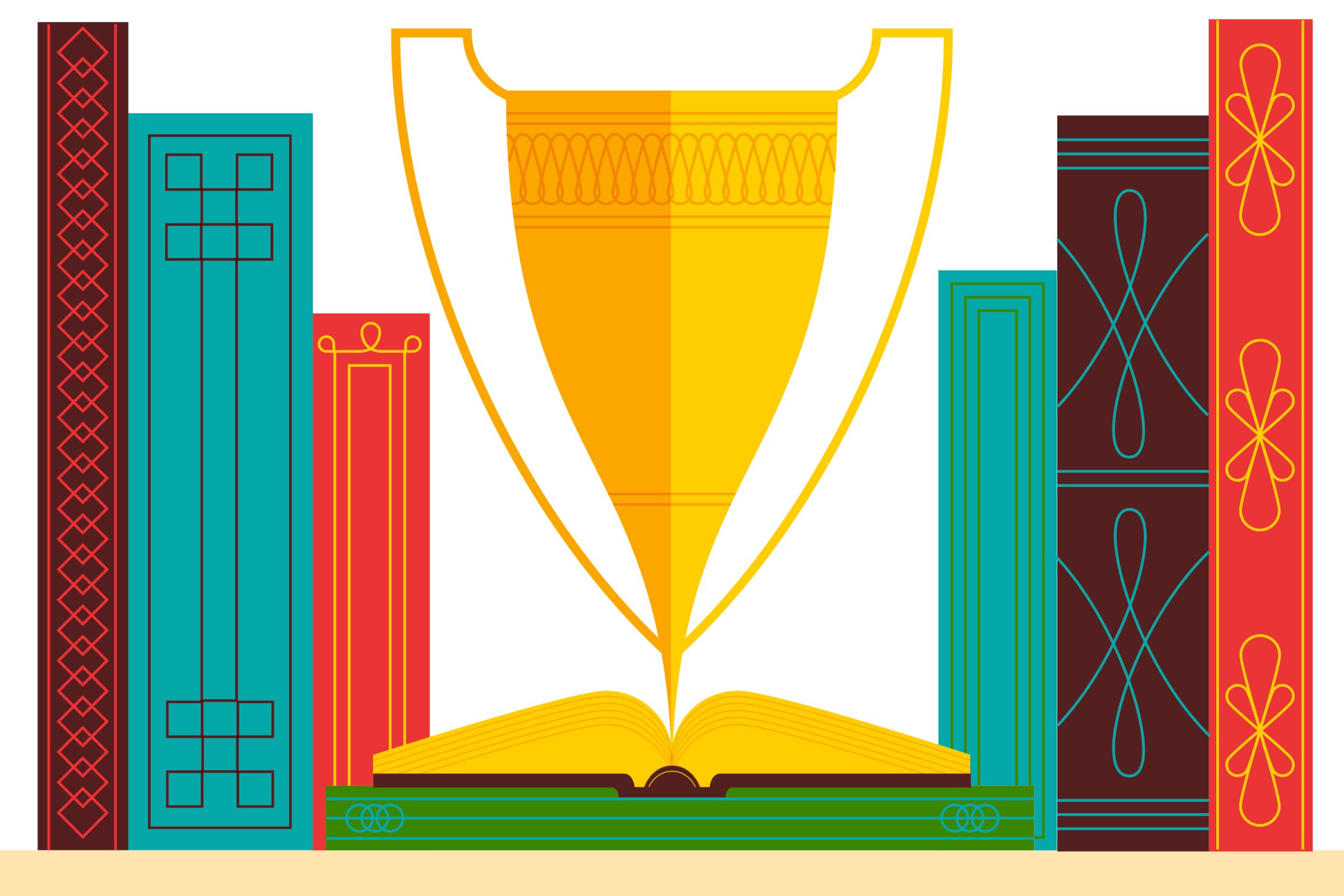
Ahead of the 2023 Times Festival of Books, we compiled the Ultimate L.A. Bookshelf: the 110 essential works across genres and forms that define Los Angeles. We started by surveying writers with deep ties to the city; 95 responded with enthusiastic suggestions. Among their (more than 500) picks were standouts many of them agreed on, recommending them again and again.
Below are the best of the best, the 26 works that came up at least seven times among our respondents, ranked by vote count.
Slow Days, Fast Company by Eve Babitz, 1977
‚ÄúYou can‚Äôt write a story about L.A. that doesn‚Äôt turn around in the middle or get lost,‚ÄĚ Babitz writes in her second book. The collection is steeped in the understanding of a native daughter, which means she doesn‚Äôt need to explain anything. How refreshing that is ‚ÄĒ and also Babitz‚Äôs voice, which is smart and funny, evoking excess as a way of life. Or not excess exactly, but a kind of ease, a lack of pretension and the ability or willingness to embrace Los Angeles for what it is. ‚ÄúEve‚Äôs masterpiece,‚ÄĚ says the author‚Äôs biographer, Lili Anolik. ‚ÄĒ DLU
Less Than Zero by Bret Easton Ellis, 1985
‚ÄúPeople are afraid to merge on freeways in Los Angeles,‚ÄĚ Ellis declares in the famous opening line of ‚ÄúLess than Zero,‚ÄĚ which Stephanie Danler says ‚Äúbelongs on this list forever and ever.‚ÄĚ The privileged, sun- and cocaine-soaked teens of Beverly Hills use ennui to mask their fear of connection, but the book is as brave as it is bratty. It peeled back the Republican, Reagan-era sheen of Los Angeles to show beautiful rich kids who were not all right ‚ÄĒ and who, like the heroes of noir and punk, were more inclined to self-destruct than to ask for help. ‚ÄĒ CK

Subscribers get exclusive access to this story
We’re offering L.A. Times subscribers special access to our best journalism. Thank you for your support.
Explore more Subscriber Exclusive content.
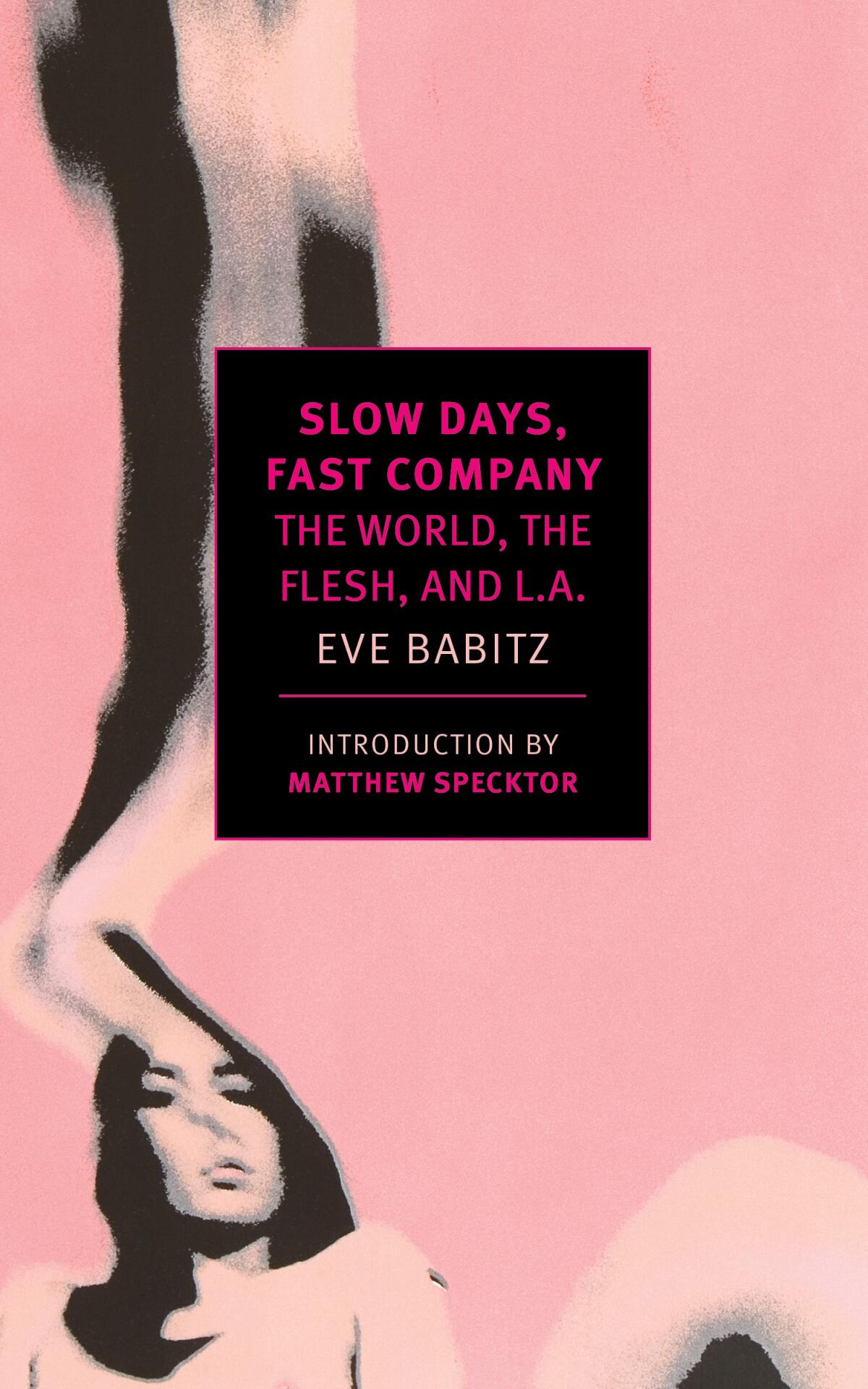
Elsewhere, California by Dana Johnson, 2012
Part of the Great Migration, Avery‚Äôs family moves from the South to South L.A., then to West Covina, and she tries to make sense of it all as a painter and assemblage artist. ‚ÄúSimply the best evocation of what it is like to grow up in Los Angeles that I know,‚ÄĚ writes Lou Mathews. Aimee Bender cites it ‚Äúbecause of how it moves between worlds/neighborhoods via language.‚ÄĚ And publisher Dan Smetanka sums it up: ‚ÄúAn L.A. artist‚Äôs entire life revisited in one day, as if Mrs. Dalloway traded in her flowers for Dodger tickets.‚ÄĚ ‚ÄĒ CK
Sidewalking by David L. Ulin, 2015
Since arriving from the East more than 30 years ago, Ulin has become a devoted and truthful voice on L.A. ‚ÄĒ self-consciously a non-native, no booster but a cautious optimist. His ambivalent survey of a city in transition begins with his defiant walking habit but quickly zooms both out and inward, like L.A. itself. From Bunker Hill to Watts to Miracle Mile to the Grove, Ulin examines promises of pedestrian renewal (some already broken today) but lands where all of us do: in a place we are redefining for our own use, whether we know it or not. ‚ÄĒ BK
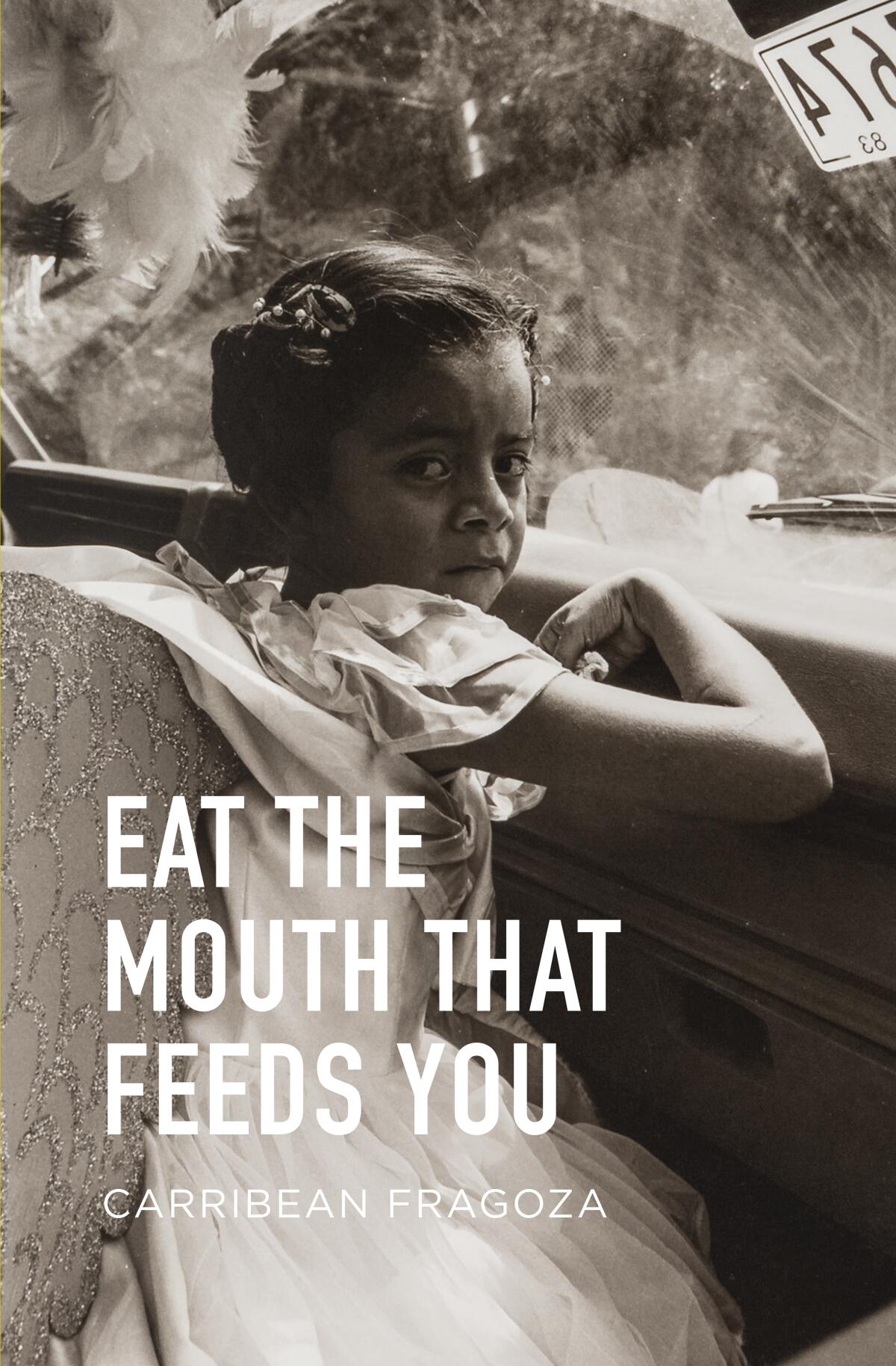
Eat the Mouth That Feeds You by Carribean Fragoza, 2021
Fragoza‚Äôs first collection is a game-changer, 10 stories that grow out of a series of overlapping traditions: fantastical, feminist, always engaged with the complications of identity and place. In ‚ÄúCrystal Palace,‚ÄĚ a woman recalls working in a Guadalajara shop, where she inadvertently witnessed her proper boss melt down over love. In ‚ÄúMe Muero,‚ÄĚ a young woman lives (that‚Äôs the only word for it) through her own death. At the heart of each story here is the sense of something elemental underneath the surface. ‚ÄúShe‚Äôs at the fore of the next generation of San Gabriel Valley writers,‚ÄĚ Jaime-Becerra says. ‚ÄĒ DLU
Material Dreams: Southern California Through the 1920s by Kevin Starr, 1990
Starr marshals facts and stories with the administrative genius of a gifted field general. His work is ebullient, nuanced, interdisciplinary history of the grandest kind. He‚Äôs a born storyteller too, mining a rich seam of anecdotal coal to animate complex, enigmatic figures. Of the eight books in his immortal ‚ÄúAmericans and the California Dream‚ÄĚ series, this is the only one focused almost exclusively on the Southland, mostly L.A. in the 1920s. A chapter on the ‚ÄúZeitlin circle,‚ÄĚ around Jake Zeitlin‚Äôs bookstore, reads like a dozen great L.A. biographies commingling around the same bungalow court. ‚ÄĒ DK
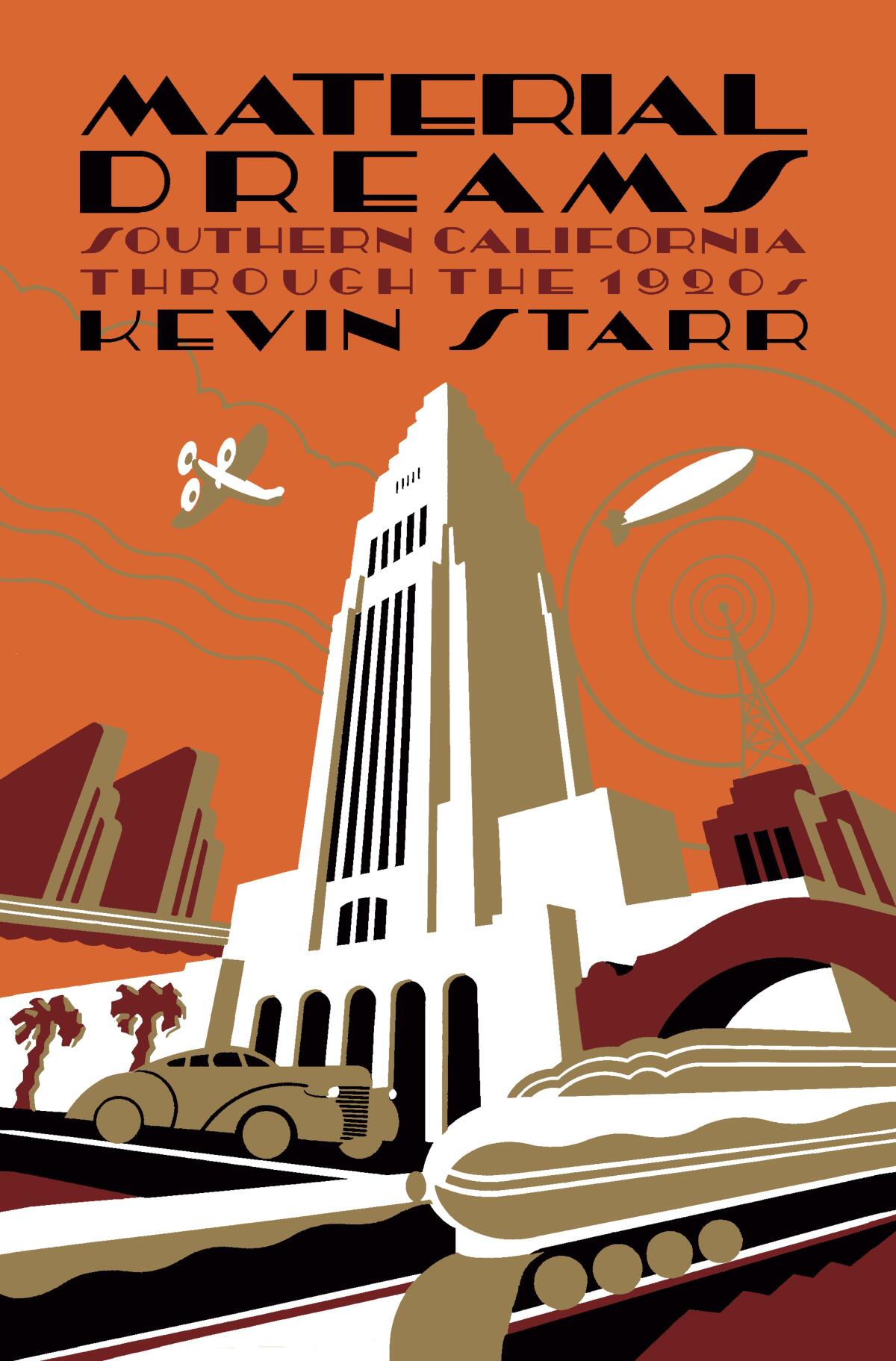
Diaries, 1939-1983 (in 3 volumes) by Christopher Isherwood
In 1939, upon his arrival in L.A. from war-shadowed Europe, Isherwood wrote, ‚ÄúWe had an hour to spare, and we spent it finding an apartment.‚ÄĚ (Sigh.) There began what Pico Iyer calls Isherwood‚Äôs ‚Äúexhilarated discovery of a New World Palestine.‚ÄĚ The quiveringly clear prose of his diaries reveals a virtuoso of the first impression. He met nobody without confiding an acute, occasionally wicked impression to his notebook. Isherwood died in 1986, in a place no less strange half a century after he first beheld it. Our landscape, he once wrote, gently breaks it to a visitor that ‚ÄúI am not part of your neurosis.‚ÄĚ ‚ÄĒ DK
The Long Goodbye by Raymond Chandler, 1953
Chandler‚Äôs last great novel is not only a piece of crime writing; it is also an ambitious work of social fiction, with some autobiographical threads. Marlowe has grown older and more vulnerable, which makes ‚ÄúThe Long Goodbye‚ÄĚ a precursor to the novels of contemporary writers such as Walter Mosley and Michael Connelly, whose characters age and develop from book to book. ‚ÄúWho can write a sentence as sharp or create a mood as cleanly as Chandler?‚ÄĚ wonders Maria Hummel. ‚ÄúIt was as if he used ink when so many writers use pencil.‚ÄĚ Opinions vary, but trust me: This is Chandler‚Äôs greatest hit. ‚ÄĒ DLU
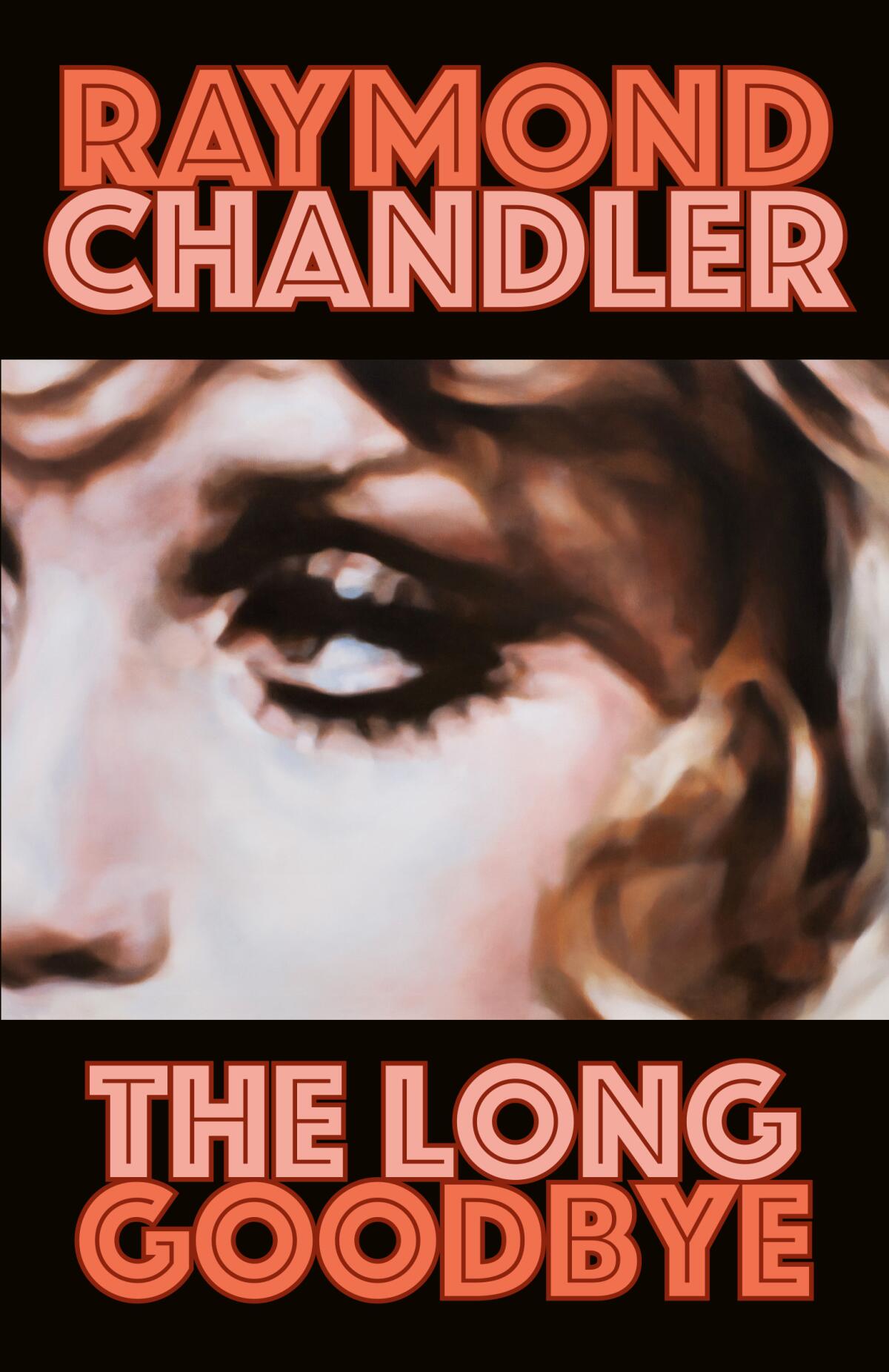
The History of Forgetting by Norman M. Klein, 1997
Operating in the contrarian tradition of Adamic, McWilliams and Davis, Klein looks through the lens of memory at a place that grew up so quickly it can sometimes seem to exist in an everlasting present tense. Despite this, traces linger; we just need to know where to look. ‚ÄúI am not implying,‚ÄĚ he writes, ‚Äúthat L.A.‚Äôs neighborhoods have no public record at all; quite the contrary. ‚Ķ However, these cannot compete with hundreds of movie melodramas where downtown is a backdrop. Indeed, Los Angeles remains the most photographed and least remembered city in the world.‚ÄĚ ‚ÄĒ DLU
Your ultimate L.A. Bookhelf is here ‚ÄĒ a guide to the 110 essential L.A. books, plus essays, supporting quotes and a ranked list of the best of the best.
White Oleander by Janet Fitch, 1999
What is it about mothers, murder and the Santa Ana winds? In a rollercoaster ride through the city‚Äôs foster system, via the child of a magnetic narcissist, Fitch nods to influences ranging from West to Didion while expanding the social strata ‚ÄĒ poor, working class, wealthy exiles, Hollywood perfectionists. Pico Iyer praises the novel ‚Äúfor catching not just the feeling and fragrance of L.A. but its fractured families and drift with rare lyricism and warmth.‚ÄĚ Pamela Redmond considers it ‚Äúa successor to Chandler and Ellroy in showing the dark bloody heart of LA.‚ÄĚ ‚ÄĒ BK
Slouching Towards Bethlehem by Joan Didion, 1968
Everyone has their favorite Didion, and many survey respondents opted for ‚ÄúThe White Album,‚ÄĚ focused more tightly on Southern California. But ‚ÄúSlouching‚ÄĚ was a thunderbolt, a direct hit on the counterculture. The title essay is arguably her masterpiece, a cool vivisection of a place and time when the center fell apart. We have ‚ÄúLos Angeles Notebook‚ÄĚ to thank for ‚ÄĒ among other gifts ‚ÄĒ the best weather reporting ever put to paper (on the Santa Ana winds). Then there was ‚ÄúSome Dreamers of the Golden Dream,‚ÄĚ a true-crime writearound that became an evisceration of the suburban idyll. ‚ÄúNone of the other books on my list exist without Didion‚Äôs classic,‚ÄĚ writes Tod Goldberg. ‚ÄĒ BK
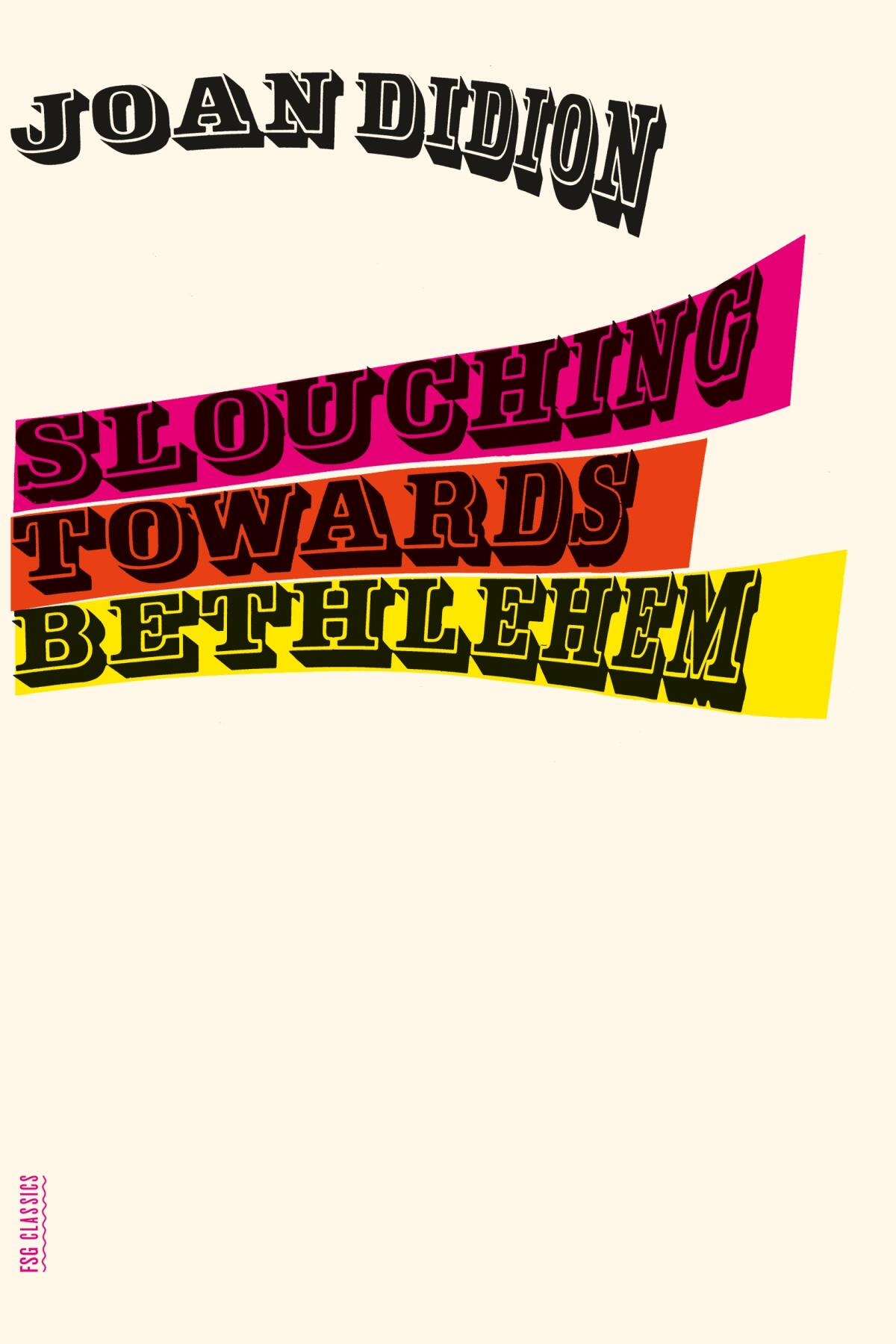
Always Running by Luis J. Rodriguez, 1993
A former Los Angeles poet laureate has become an essential Southern California voice. In many ways, that arc begins with this memoir, which chronicles his experience as a young man involved with gangs and drugs. What‚Äôs remarkable about the book is its clarity; Rodriguez never lets anyone, himself included, off the hook. At the same time, he makes a vibrant case for the salutary effects of art and community. ‚ÄúThe more we know, the more we owe,‚ÄĚ he writes. ‚ÄúThis is a responsibility I take seriously.‚ÄĚ As William Archila puts it, ‚ÄúFinally, an L.A. story about a world I could relate to.‚ÄĚ ‚ÄĒ DLU
Sign up for This Evening's Big Stories
Catch up on the day with the 7 biggest L.A. Times stories in your inbox every weekday evening.
You may occasionally receive promotional content from the Los Angeles Times.
In a Lonely Place by Dorothy B. Hughes, 1947
Has there ever been a more vivid opening in the literature of Los Angeles? A man pursues a woman from a Santa Monica bus stop down the California Incline on a fog-saturated night. Nothing happens, but the air of menace is so palpable you can feel it in your chest. Hughes‚Äô novel may be best known for inspiring the 1950 Bogart movie of the same name, but the book is so much better, so much darker. At its center is Dix Steele, a sociopathic killer masquerading as a writer, who in the end turns out to be too smart for his own good. ‚ÄĒ DLU
The White Boy Shuffle by Paul Beatty, 1996
No one takes satire farther, higher, lower or deeper than Beatty. His debut, an upside-down bildungsroman about the rise of Gunnar Kaufman from a Santa Monica scion of sellouts (‚Äúthe whitest Negro in captivity‚ÄĚ) to revolutionary poet doomsday cult leader, earned only one more vote for this list than his fourth novel, ‚ÄúThe Sellout.‚ÄĚ ‚ÄúBeatty‚Äôs humor is often the top note of discussions about his work,‚ÄĚ says Michael Jaime-Becerra, ‚Äúbut settling there ignores the nuanced, wide-ranging social critique, nestled here in Los Angeles, that drives the work forward.‚ÄĚ Dana Johnson adds: ‚ÄúHe‚Äôs surprising and original, always.‚ÄĚ ‚ÄĒ BK
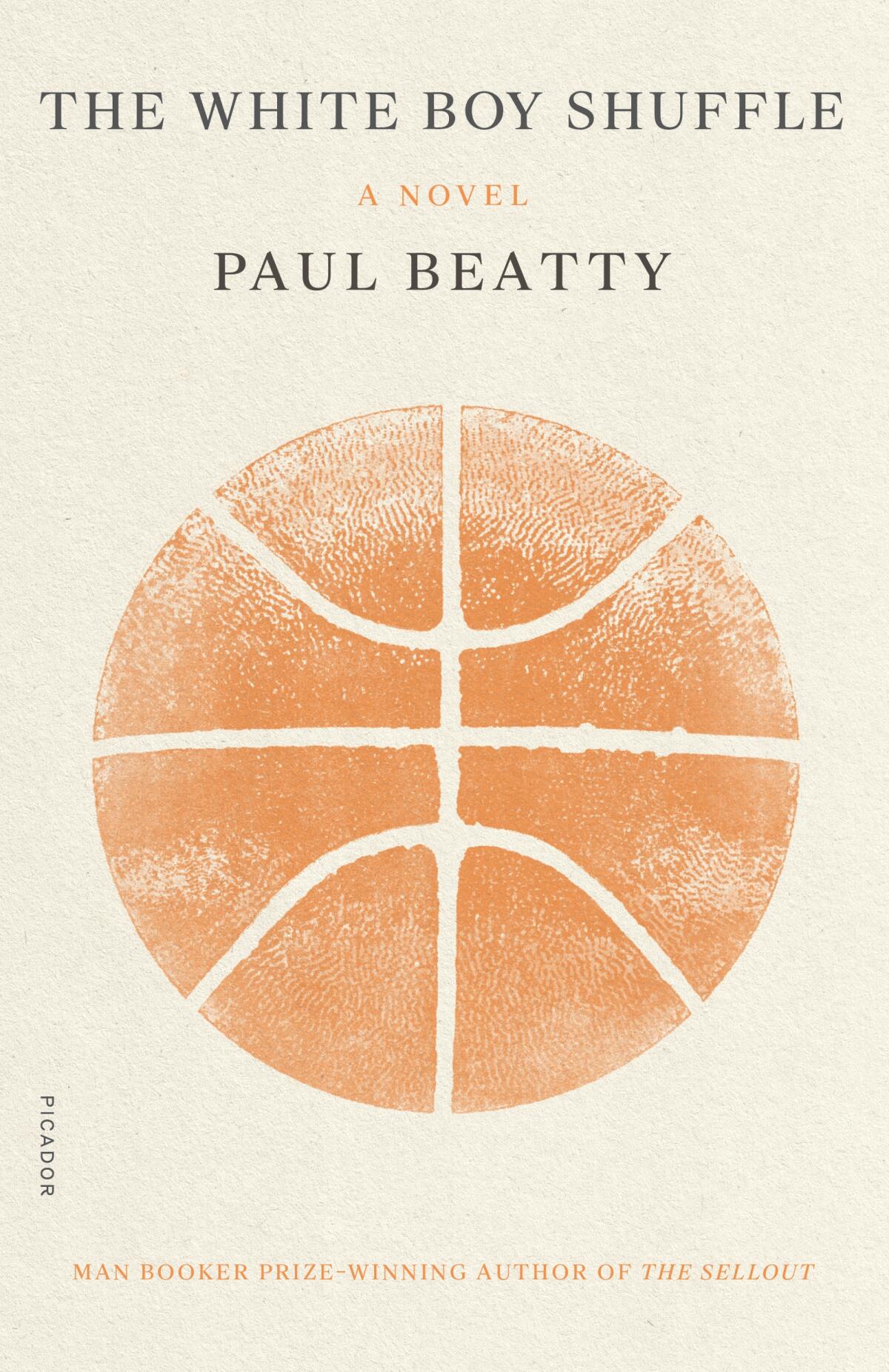
Holy Land by D.J. Waldie, 1996
In a move that recalls ‚ÄúPlay It As It Lays,‚ÄĚ Waldie‚Äôs first book features 316 chapters, some no longer than a sentence or two. The structure mirrors the content, which traces three related narratives: the history of Waldie‚Äôs family; the story of Lakewood and its development as a planned community; and the saga, lithic and otherwise, of the land itself. Waldie was once Lakewood‚Äôs public information officer; he still lives in the house his parents bought before his birth. ‚ÄúLyrical, surprising, strange, and smart,‚ÄĚ says Bill Deverell, of this most idiosyncratic of Southern California books. ‚ÄĒ DLU
The Big Sleep by Raymond Chandler, 1939
Chandler wrote like a broken, hungover angel, seeing the beauty and darkness of Los Angeles in tandem. This debut novel delivered world-weary detective Philip Marlowe to readers with lines such as, ‚ÄúIt seemed like a nice neighborhood to have bad habits in.‚ÄĚ Marlowe begins in a rich man‚Äôs house and deftly crosses through seedier scenes ‚ÄĒ pornography dealers, Hollywood nightclubs, murders ‚ÄĒ only to return and leave a trail of broken hearts. As iconic as he is now, it took a while for Marlowe to catch on, after a circular journey through Humphrey Bogart‚Äôs film version, the coining of ‚Äúnoir‚ÄĚ in France and the enshrinement of Chandler‚Äôs gimlet-eyed vision of L.A. ‚ÄĒ CK
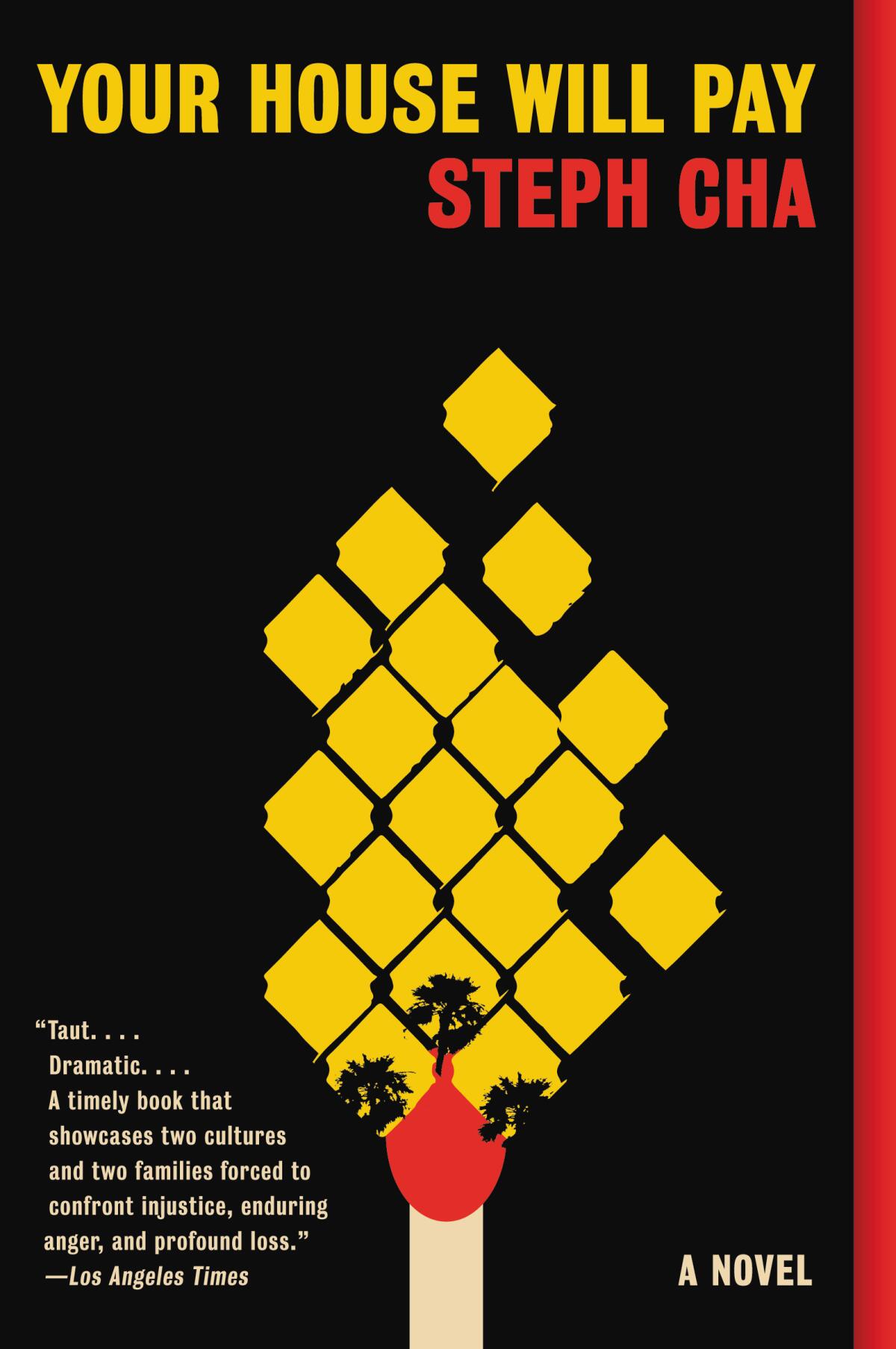
Your House Will Pay by Steph Cha, 2019
In this magnificent novel, Cha overturns all the conventions of crime fiction, even as she employs them to broader ends. Inspired by the 1991 murder of Latasha Harlins, the book moves from the 1992 uprising nearly to the present, tracing the effects of that killing on two families (one Black and one Korean). Cha is a deft stylist and a vivid creator of character, and she understands that there are no glib solutions in a situation such as this. ‚ÄúSome might call this a crime novel ‚ÄĒ and of course it is,‚ÄĚ notes Tod Goldberg. ‚ÄúBut it‚Äôs also the most profound look at modern Los Angeles I‚Äôve read in recent memory.‚ÄĚ ‚ÄĒ DLU
If He Hollers Let Him Go by Chester Himes, 1945
Himes‚Äô debut novel was written out of the author‚Äôs experience in World War II-era Los Angeles, which he would later describe as having ‚Äúshattered‚ÄĚ him. The first-person narration is propulsive, driven by rage and loathing, and the portrait of the city as racially virulent is especially compelling, given the myth of Southern California as a land of opportunity. ‚ÄúA bitter bite out of redlined, racist Los Angeles,‚ÄĚ says Greg Goldin ‚ÄĒ and he couldn‚Äôt be more correct. This is one of the city‚Äôs ur-texts, a precursor to the work of writers such as Wanda Coleman and Walter Mosley. ‚ÄĒ DLU
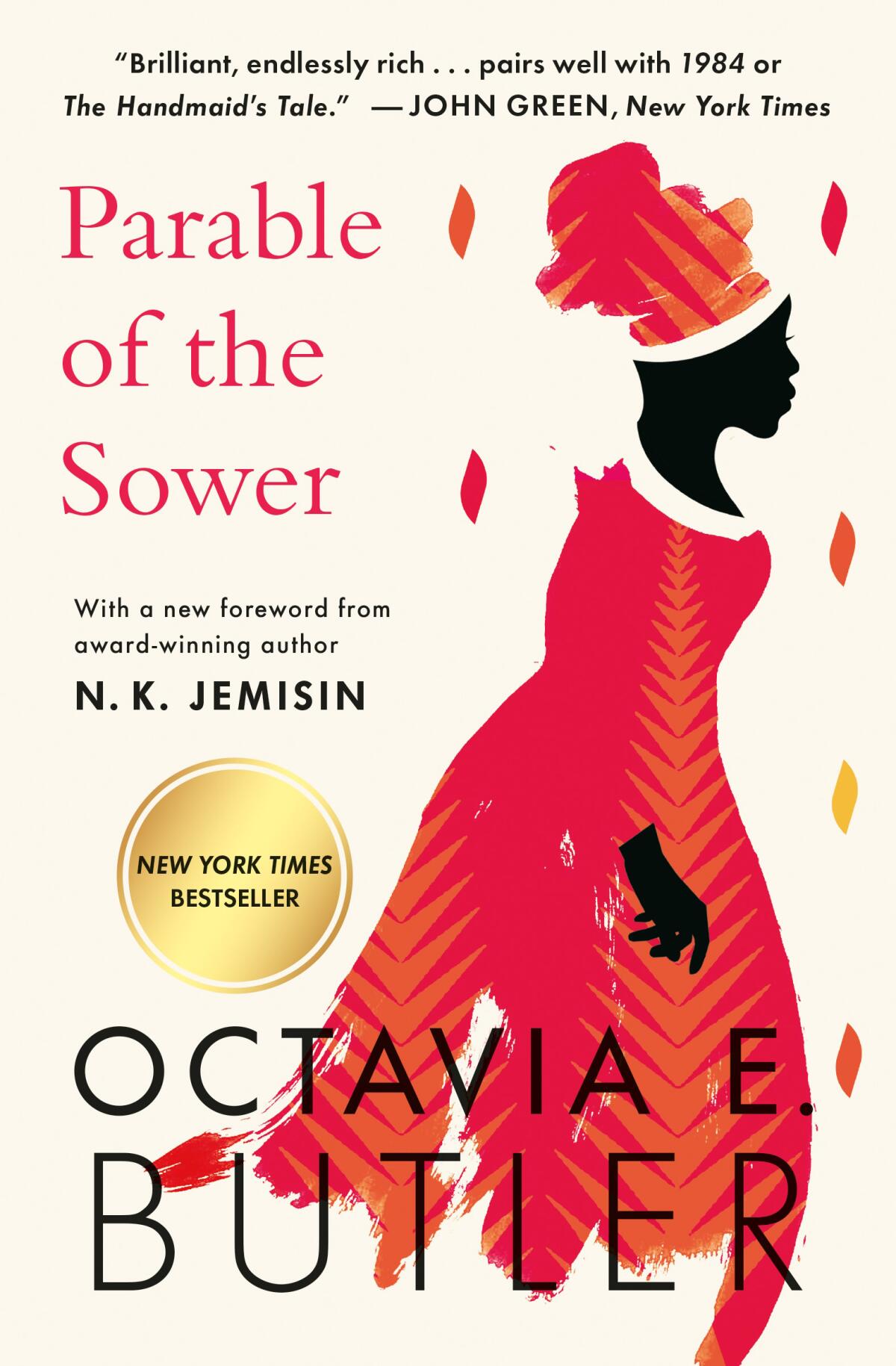
Parable of the Sower by Octavia E. Butler, 1993
In a near-future Los Angeles riven by drought, addiction and inequality, work is scarce, travel is dangerous and middle-class communities like Lauren‚Äôs hope their walls hold. When they fail, the young Black teen flees, carrying seeds and desperate hope on her walk north on the 101. Prescient and powerful, it‚Äôs ‚Äúa classic not just of the genre, but of Los Angeles literature too,‚ÄĚ writes Katie Orphan; Carolina Miranda calls it ‚Äúa book by an essential L.A. writer that seems to perfectly describe where we are now.‚ÄĚ ‚ÄĒ CK
Southern California: An Island on the Land Carey McWilliams, 1946
McWilliams‚Äô masterpiece blends history, social commentary and political observation to evoke Southern California in three dimensions, with all its complexity and contradictions. More than three-quarters of a century later, it remains not only relevant but also prescient ‚ÄĒ about water, land, race, development and the tension between mythology and the realities on the ground. ‚ÄúStill the irreplaceable history,‚ÄĚ notes Kenneth Turan. Inspired by Adamic and Mayo and a precursor to the work of every Los Angeles writer who came after, this is an essential text. ‚ÄĒ DLU
Ask the Dust by John Fante, 1939
Fante‚Äôs second book is, along with ‚ÄúThe Day of the Locust‚ÄĚ and ‚ÄúThe Big Sleep,‚ÄĚ one of three novels published in the same year that marked a turning point in the way we write or think about Los Angeles, the emergence of the city it would become. The story of Arturo Bandini, a young writer living in a hotel on Bunker Hill, it has an almost hallucinatory intensity, and its portrayal of downtown Los Angeles during the Depression, as well as the 1933 Long Beach earthquake, are brilliant and profound. ‚ÄĒ DLU

Devil in a Blue Dress by Walter Mosley, 1990
Underemployed World War II vet Easy Rawlins debuted in this novel and quickly slipped onto detective fiction‚Äôs top shelf, landing comparisons to Marlowe and others. Mosley‚Äôs novel told a not-unfamiliar tale of murder and corruption in the City of Angels, but it did so along Crenshaw Boulevard instead of the rich enclaves of Pasadena. It showed, Rachel Howzell Hall writes, that ‚ÄúBlack Los Angeles actually exists and there are heroes and dames here.‚ÄĚ With snappy dialogue and rich atmosphere, Mosley created an iconic character with a new story to tell. ‚ÄĒ CK
Mercurochrome by Wanda Coleman, 2001
Coleman, who died in 2013, was the unofficial poet laureate of Los Angeles and more. Fiction writer, essayist, newspaper columnist, radio host ‚ÄĒ she was the literary heart and soul of the city, which she loved and resisted at once. ‚ÄúMercurochrome‚ÄĚ was a finalist for the 2001 National Book Award in poetry, and it‚Äôs a vivid representation of her sensibility. ‚ÄúLove / as i live it,‚ÄĚ she writes in the title poem, ‚Äúseems more like mercurochrome / than anything else / i can conjure up. it looks so pretty and red, / and smells of a balmy / coolness when you uncap the little applicator. / but swab it on an / open sore and you nearly die under the stabbing / burn.‚ÄĚ ‚ÄĒ DLU
Play It As It Lays by Joan Didion, 1970
One of the most beloved works of Angeleno literary fiction was written by a famous essayist. The story of Maria Wyeth‚Äôs disintegration, her freeway drives and her longing for her daughter, ‚Äúcaptures the morally lost and unmoored feeling of the Californian creative class,‚ÄĚ writes Jordan Harper, making it ‚Äúboth a time capsule and timeless.‚ÄĚ Charles Finch adds: ‚ÄúThe way Hemingway thought all American novels originated with Huck Finn, all L.A. novels originate with ‚ÄėPlay It As It Lays.‚Äô The simultaneous inward intensity of feeling and outward diffidence, the emotional and moral dangers of simulation, the hot alien beauty of the city ... it superannuated ‚ÄėThe Day of the Locust‚Äô and gave either a template or at minimum an inflection to the fiction that came afterward.‚ÄĚ ‚ÄĒ BK
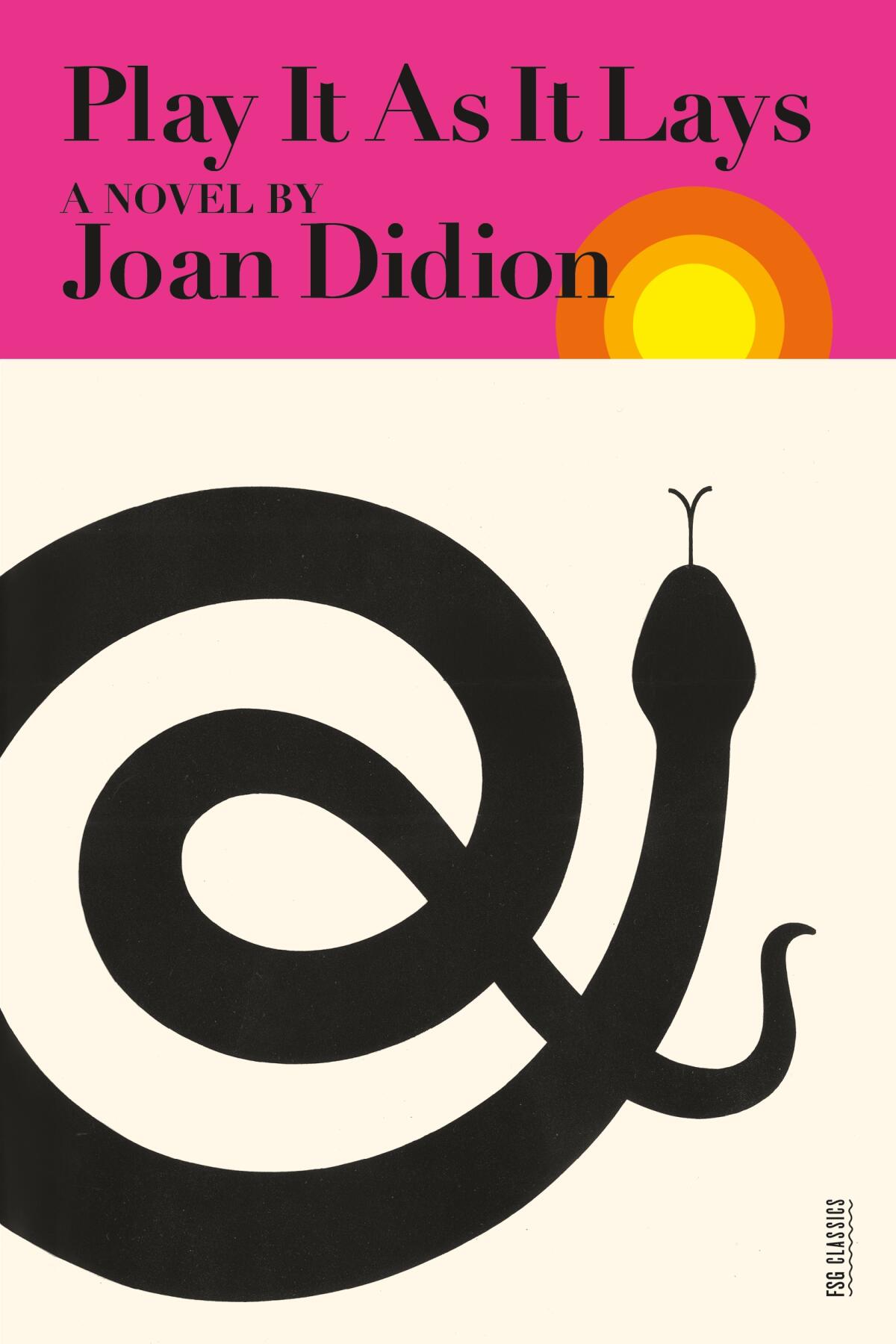
The Day of the Locust by Nathanael West, 1939
West‚Äôs final novel (he died the year after it was published) is a Hollywood masterpiece, a scabrous, pointed satire of the movie business and its considerable discontents. Revolving around a scenic painter named Tod Hackett, it imagines the city ending in a conflagration, and its gimlet-eyed look at the industry‚Äôs hypocrisies and contradictions is both of its moment and ongoingly relevant. ‚ÄúI can‚Äôt turn north from Sunset into the hills,‚ÄĚ says Ivy Pochoda, ‚Äúwithout this book popping into my head ‚ÄĒ every single time.‚ÄĚ ‚ÄĒ DLU
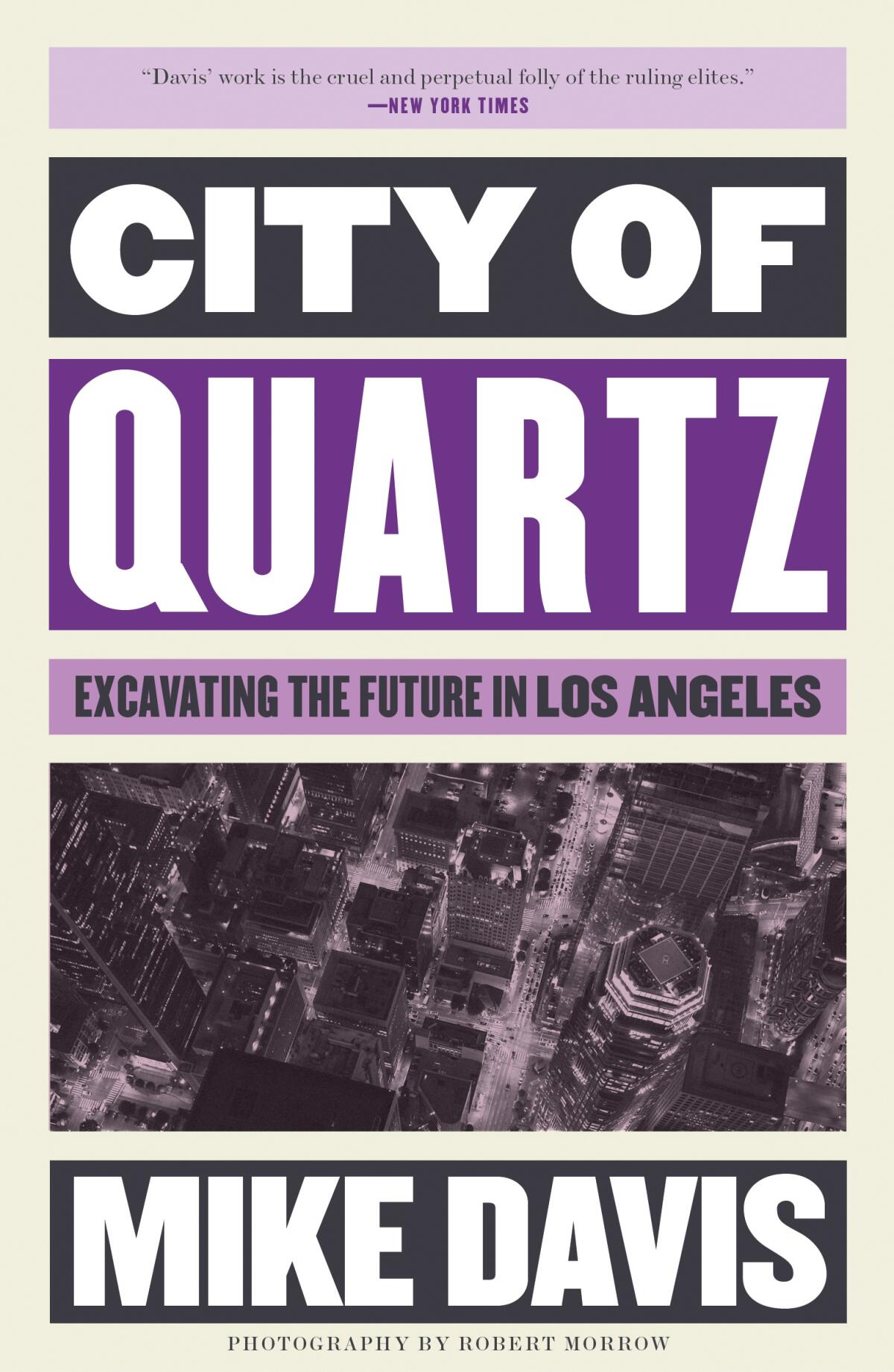
Getting writers to reach consensus is a notoriously tricky proposition. Our 95 survey respondents offered a vast array of books, made wildly counter-intuitive arguments and sometimes disputed the entire premise of rankings and genre distinctions. But one thing they agreed on ‚ÄĒ or more than a third of them ‚ÄĒ was that ‚ÄúCity of Quartz,‚ÄĚ Mike Davis‚Äô magisterial, obstinate, rigorous and highly entertaining survey of Los Angeles‚Äô self-identity and power structure, belongs in any pantheon worth preserving. Here‚Äôs what some of them had to say about the monumental work and about Davis, who died last year, leaving a legacy that will last as long as the city itself. ‚ÄĒ BK
In advance of the 2023 L.A. Times Festival of Books, we surveyed 95 writers and culled 110 works into the Ultimate L.A. Bookshelf. Get ready for some surprises
Sign up for our Book Club newsletter
Get the latest news, events and more from the Los Angeles Times Book Club, and help us get L.A. reading and talking.
You may occasionally receive promotional content from the Los Angeles Times.